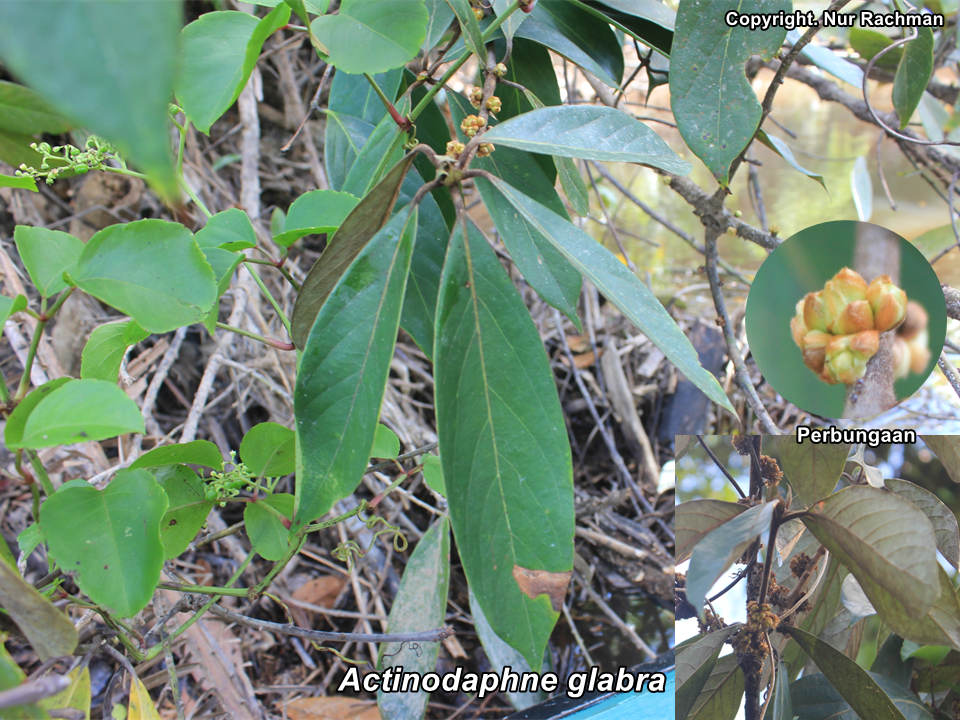Actinodaphne glabra
Blume
Lauraceae
Nama : Medang.
Deskripsi : Pohon, dapat mencapai tinggi 15 m, diameter batang 10−20 cm; kulit batang halus tidak berlekahan. Daun penumpu ada, melanset. Daun tersusun dalam pusaran semu, kuncup tu nas bersisik seperti daun katafil, meninggalkan bekas luka pada ranting; jorong-melanset atau menjorong-lonjong; pangkal daun menirus atau membaji; ujung daun meruncing; tepi daun mengutuh; pertulangan daun menyirip, 10−13 pasang; permukaan bawah daun hijau kebiruan, berlilin. Perbungaan glomerula (tandan duduk), pendek, daun gagang lekas luruh. Bunga berumah-2, perhiasan bunga bercuping 6, benang sari terdapat pada bunga jantan, benang sari steril pada bunga betina 9 dalam 3 baris, baris ketiga masing-masing memiliki dua kelenjar, kepala sari introrse, bersel-4; bakal buah bulat telur. Buah buni, buah duduk dalam tabung perhiasan bunga berbentuk cangkir yang membesar.
Ekologi : Persebaran alami di Kalimantan dan endemik, menurut Kessler & Sidiyasa (1994) dan dilaporkan juga di Jawa (POWO, 2023). Pada umumnya tumbuh pada hutan primer dan hutan sekunder. Tumbuh pada hutan dataran rendah seperti hutan riparian, hutan lahan basah, dan hutan sampai punggung perbukitan. Referensi: L.1779603! (digital spesimen); Kessler & Sidiyasa, 1994.
Kegunaan : –

